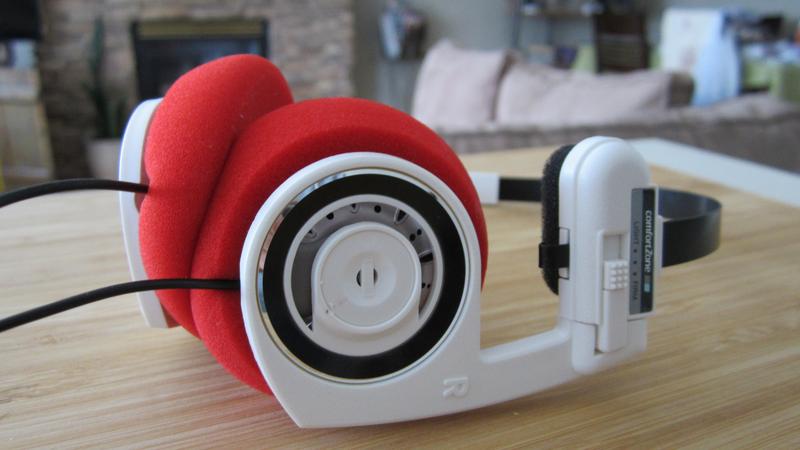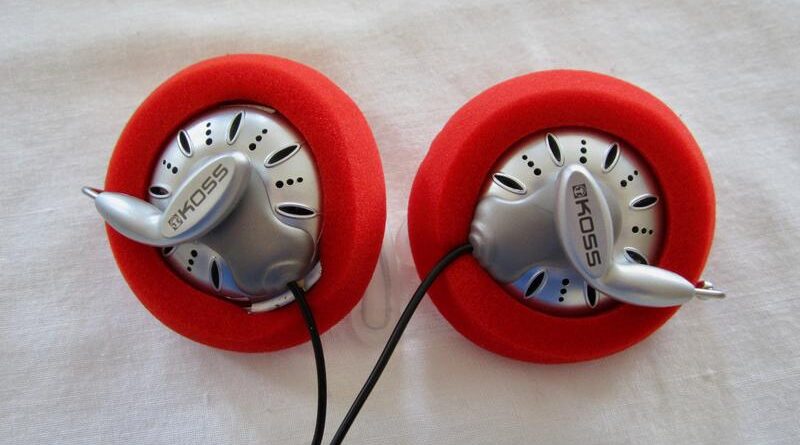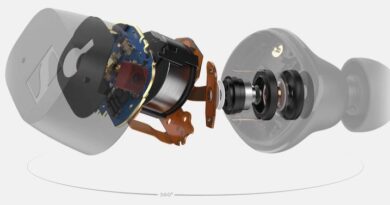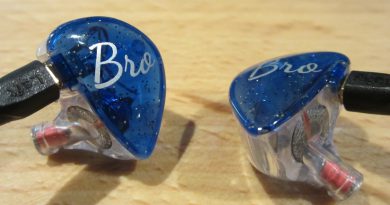Koss KSC75 Review – Pills And Thrills And Bellyaches
Per my New Year’s resolutions, I haven’t acquired any new headgear for over a month, which has been more painful than gallstones but has given me the opportunity to revisit some of my older gear, much of which (like the KSC75) hasn’t been touched in years.
Wildly venerated as the Great Audiophile Bargain, and utilizing the same driver as ancient designs like the PortaPro and KSC35, the <$25 KSC75 look and feel cheap but can actually withstand a fair amount of abuse (as a bonus, they come with a lifetime warranty).
Like almost everyone else, I found the included earclips to be cumbersome and ill-fitting, and I replaced them with the aftermarket, $7 Parts Express headband. Thus shod, the KSC75 are exceptionally comfortable—virtually weightless, without clamping pressure. Considering the open design, isolation is a bit better than expected although they’re much better for walking the dog than for the subway.
At 60 oHm the KSC75 are a surprisingly tough load for a cheap consumer piece—my quad-DAC LG G8 drives ‘em adequately, but they scale considerably with more power.
Oft described as “neutral”, the KSC75 are better characterized as warm and balanced, without undue emphasis on any frequency. Bass is ample in quantity but lacks depth and can sound soggy/muddy, especially with lower-powered sources (amping tightens and adds punch to the low end).
Note texture is fairly rich—there’s a slightly syrupy, dark quality—but these are clean-sounding overall and wholly without grittiness or sharp edges. Mids are full-sounding and slightly forward—male voices in particular have a lot of body. Treble is silky-smooth though lacking in extension; drums and cymbals sound rounded-off and attack transients are slow.
Soundstage on the KSC75 is unexpectedly narrow and low-ceilinged (think small club); instruments stay well-separated on less dense fare, but these can sound a bit congested on orchestral works and more complex arrangements. Acoustic music sounds very natural and live.


Their lack of microdetail and speed notwithstanding, I can see the wide appeal of these—they nail that elusive quality of tonal accuracy. Like a good vinyl rig, they sound very true-to-source and uncolored; perhaps because of the limited extension they make lower-quality files sound less compressed.
Well-regarded budget cans like the $80 Philips SHP9500 have punchier, tauter bass and present more information but sound more artificially juiced at the high end; I actually preferred the KSC for extended listening. On a lark, a drinking buddy and I A/B’d the KSC with his ($500) Hifiman Sundara planars. Perhaps needless to say, the Sundara’s are technically superior in virtually every respect—far more revealing, more expansive-sounding, crisper.
Yet both of us felt that, comparatively speaking, the Sundara was over-analytical, in the sense of drawing your ears to the separate frequencies as opposed to the seamless whole, while the homely Koss presented a more coherent performance and presented a nice alternative for less critical listening.
I don’t want to overrate these—they don’t capture a lot of low-level nuance and they won’t satisfy bassheads. However, they are dirt cheap, comfortable, and unabashedly “musical”. Which means, I suppose, there’s no reason not to buy them.







